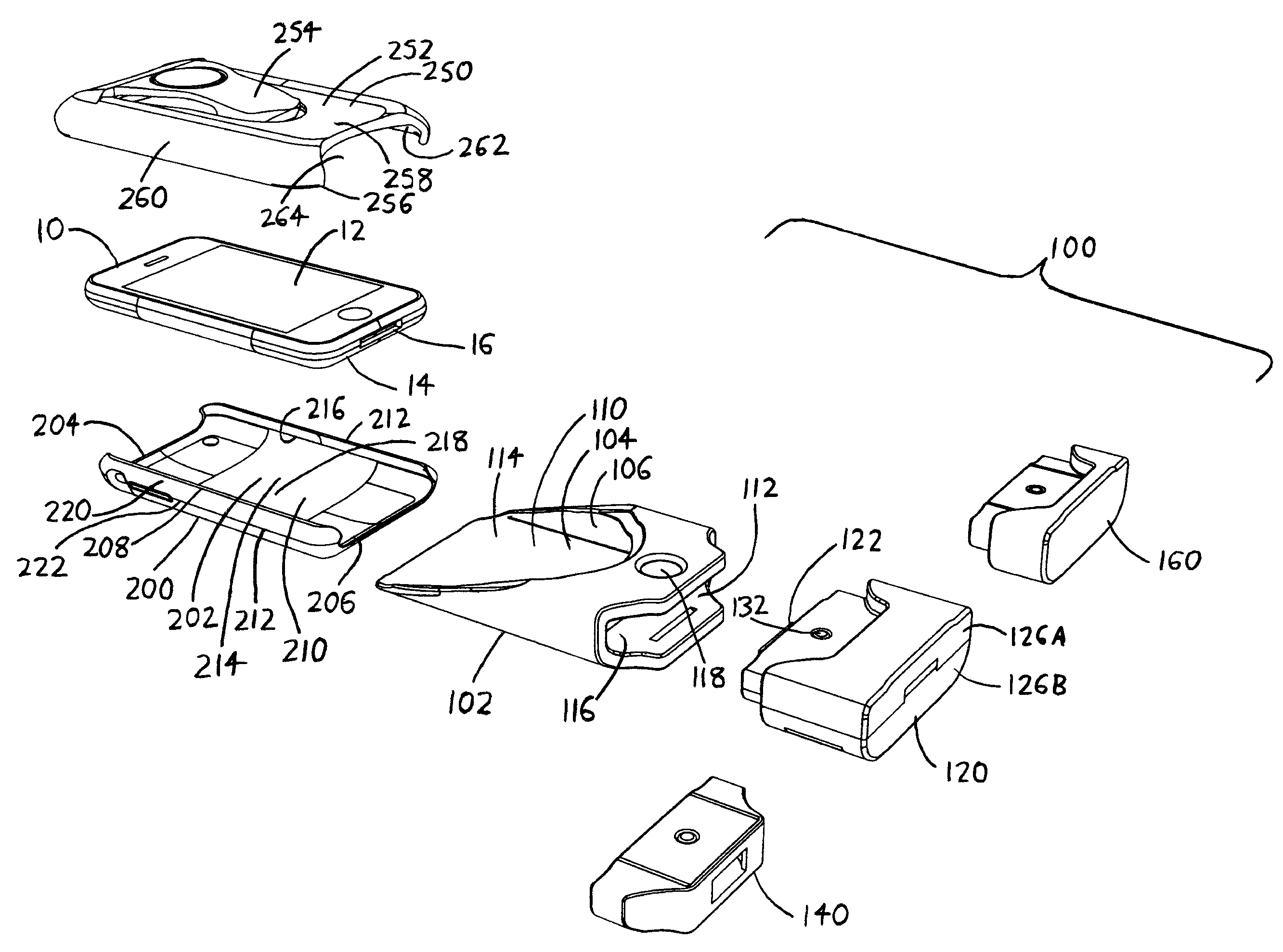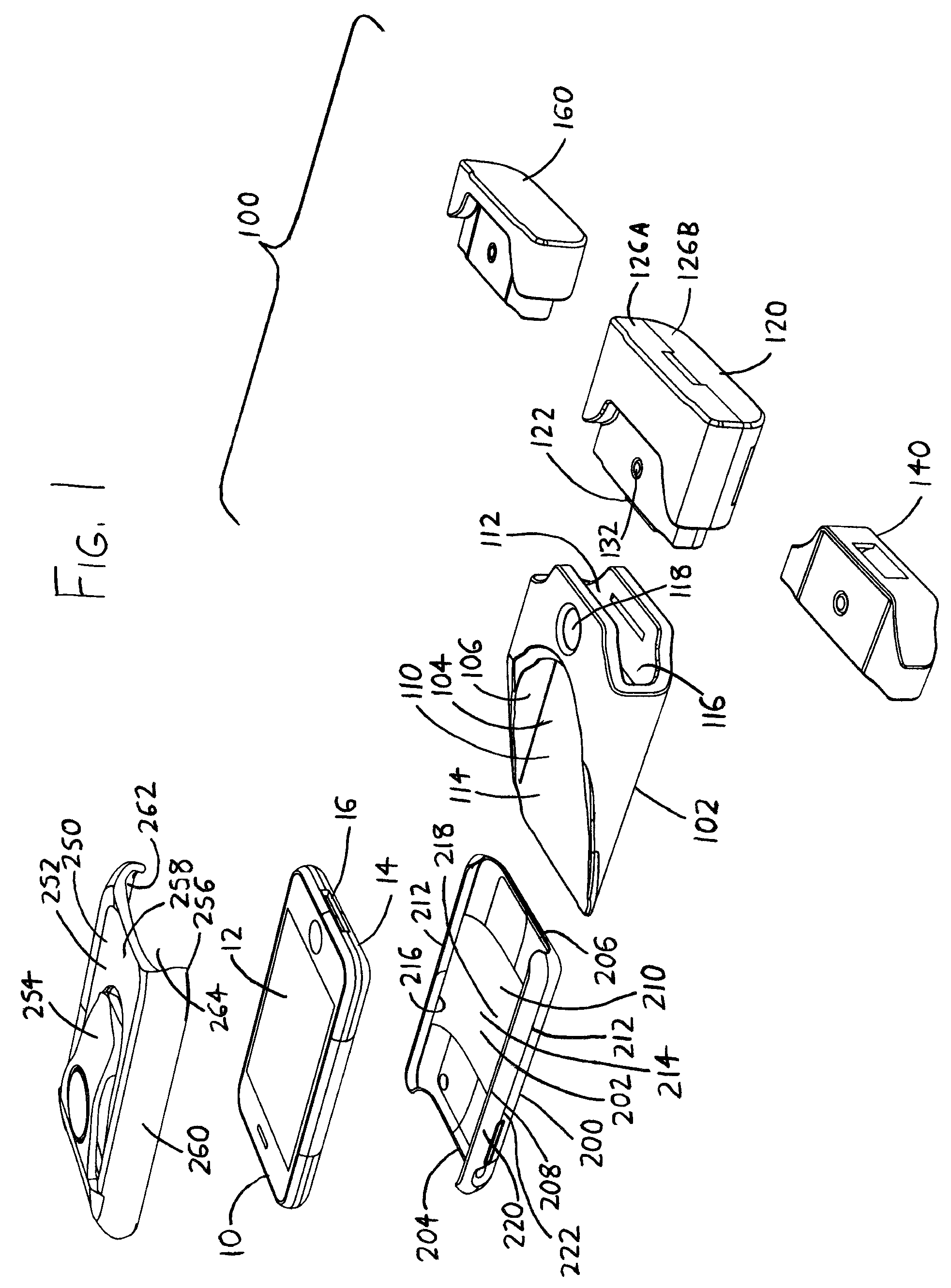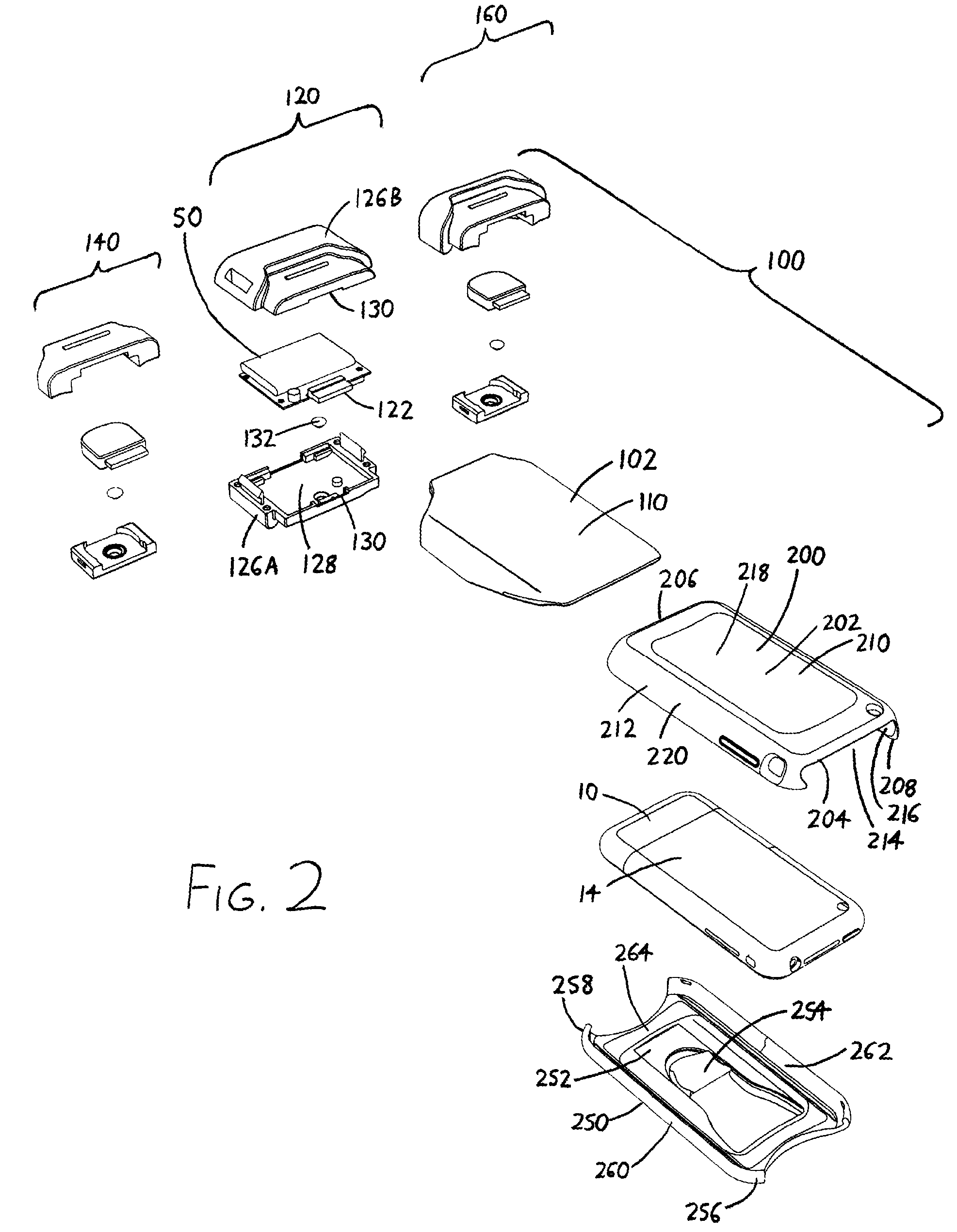Docking system for MP3 players and other portable electronic devices
a portable electronic device and docking system technology, applied in the direction of electrical apparatus casings/cabinets/drawers, instruments, cabinets, etc., can solve the problems of not being able to easily fix, the connectors used on one device do not match the connectors conventionally, and the docks tend to suffer
- Summary
- Abstract
- Description
- Claims
- Application Information
AI Technical Summary
Benefits of technology
Problems solved by technology
Method used
Image
Examples
Embodiment Construction
[0039]Throughout this document, unless specified otherwise, the following terms should be understood to have the following meanings.
[0040]The term “deviceconnection port,” when referring to a connection port of a portable electronic device, refers to a port for the input and / or output of signals (such as data) and / or power. As examples, a device connection port might be a female socket (or male plug) for transmission of DC power into and / or out of the electronic device; a female socket (or male plug) meeting the RS-232 standard for transmission of data into and / or out of the electronic device; or a female socket (or male plug) meeting the USB standard for transmission of data into and / or power into and / or out of the electronic device. In the context of the preferred versions of the invention illustrated in the accompanying drawings, the device connection port is generally depicted as a 30-pin connector, which is (at the time of this document's preparation) conventionally used in IPO...
PUM
 Login to View More
Login to View More Abstract
Description
Claims
Application Information
 Login to View More
Login to View More - R&D
- Intellectual Property
- Life Sciences
- Materials
- Tech Scout
- Unparalleled Data Quality
- Higher Quality Content
- 60% Fewer Hallucinations
Browse by: Latest US Patents, China's latest patents, Technical Efficacy Thesaurus, Application Domain, Technology Topic, Popular Technical Reports.
© 2025 PatSnap. All rights reserved.Legal|Privacy policy|Modern Slavery Act Transparency Statement|Sitemap|About US| Contact US: help@patsnap.com



